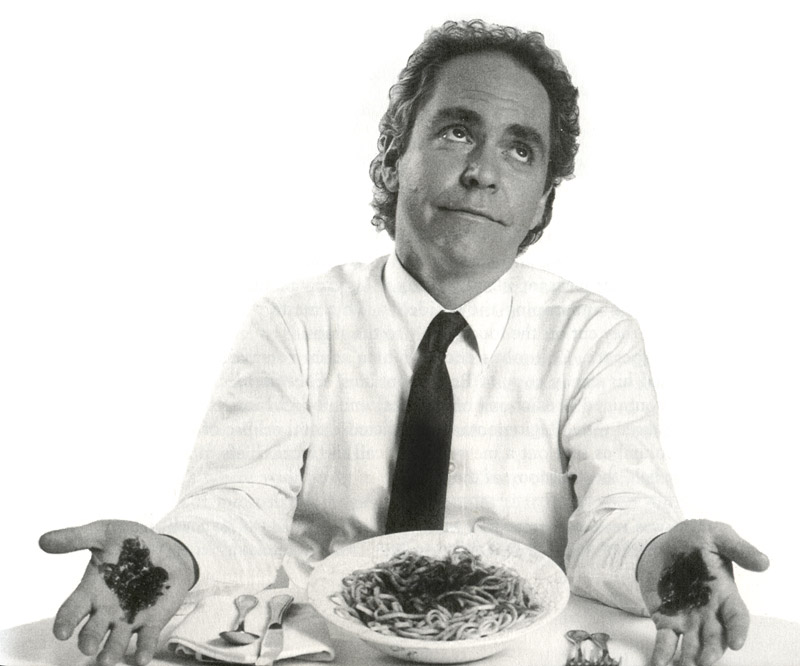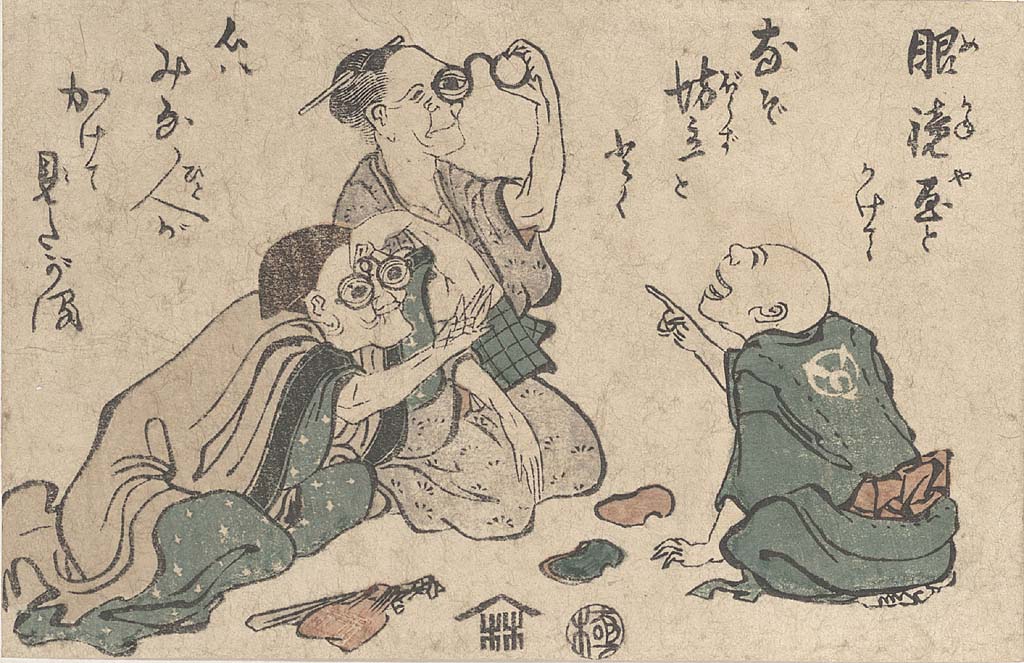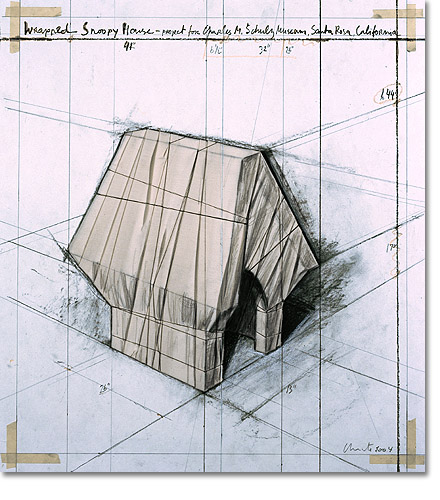It’s the dialogue of the pieces, not the pieces themselves, that creates aesthetic success. From number 51 in 101 Things I Learned in Architecture School by Matthew Frederick. I heard this quote this past week as part of the “Music of Interaction Design” panel at SxSWi presented by Cennydd Bowles and James Box. Here’s a short PBS NewsHour writeup about the panel with a video interview of the two designers.
Tag: art
-
Its the Dialogue of the Pieces
-
The Very Heart of Noise
I frequently hear music in the very heart of the noise… George Gershwin on Rhapsody in Blue’s inspiration, the rhythm of the city train.
-
Genius Childhood Recaptured at Will
But genius is nothing more nor less than childhood recaptured at will.
Charles Baudelaire, from The Painter of Modern Life. I often see this quoted by itself, so here’s some context:
But genius is no more than childhood recaptured at will, childhood equipped now with man’s physical means to express itself, and with the analytical mind that enables it to bring order into the sum of experience, involuntarily amassed. To this deep and joyful curiosity must be attributed that stare, animal-like in its ecstasy, which all children have when confronted with something new, whatever it may be, face or landscape, light, gilding, colours, watered silk, enchantment of beauty, enhanced by the arts of dress. A friend of mine was telling me one day how, as a small boy, he used to be present when his father was dressing, and how he had always been filled with astonishment, mixed with delight, as he looked at the arm muscle, the colour tones of the skin tinged with rose and yellow, and the bluish network of the veins. The picture of the external world was already beginning to fill him with respect, and to take possession of his brain. Already the shape of things obsessed and possessed him. A precocious fate was showing the tip of its nose. His damnation was settled.
-
Bute Tarentella
[Video no longer available]
Experimental animation pioneer Mary Ellen Bute’s short film Tarentella was selected this week for preservation in the National Film Registry as a culturally significant film. From the press release:
“Tarantella” is a five-minute color, avant-garde short film created by Mary Ellen Bute, a pioneer of visual music and electronic art in experimental cinema. With piano accompaniment by Edwin Gershefsky, “Tarantella” features rich reds and blues that Bute uses to signify a lighter mood, while her syncopated spirals, shards, lines and squiggles dance exuberantly to Gershefsky’s modern beat. Bute produced more than a dozen short films between the 1930s and the 1950s and once described herself as a “designer of kinetic abstractions” who sought to “bring to the eyes a combination of visual forms unfolding with the … rhythmic cadences of music.” Bute’s work influenced many other filmmakers working with abstract animation during the ‘30s and ‘40s, and with experimental electronic imagery in the ‘50s.
Bute’s final piece was an interpretation of Finnegans Wake, one of the very few attempts ever made at staging Joyce’s novel of troubled dreams.
-
James Gurney Draws Dinosaurs All Day
One time my son had a friend over. I heard the friend say in a stage whisper, “Does your dad have a job?” No, my son replied. “He just stays home and draws dinosaurs all day.” James Gurney, creator and illustrator of Dinotopia, on growing up with art. (His Gurney Journey blog on illustration, drawing, and painting is very much worth reading, by the way)
-
Linguni a La Stigmata

From a 1992 New York Times review of one of my favorite books from when I was in school, Penn & Teller’s How to Play With Your Food:
A copious plate of pasta arrived, with no sauce. Teller suddenly stabbed his palms with a fork and rummaged through the strands of linguine. When a bright red river surged from beneath the plain pasta, Teller stood up, dripping red palms outstretched. Voila! The thrillingly gruesome “Linguine a la Stigmata.” Waiters smiled, diners at nearby tables didn’t notice a thing, and the linguine was served to one and all. …
“Violence is what gives you real excitement,” [Penn] continued. “It’s what gives us the rage to live. Without violence, you don’t really have art. You have to have your Shakespeare, your Greek tragedies. Teller and I are both very pro-violence in the arts, but only in the arts. No one wants to go on a roller coaster that’s slow and flat.”
But does that include sticking a fork into your eye? Absolutely. “Nothing is more life affirming than doing this stuff and not being hurt,” Teller said. “It’s cool to be startled. You laugh, and that’s a social activity. There are repartees, and there is ramming a fork into your eye.”
-
Catmull Interview
They didn’t think it was relevant. In their minds, we were working on computer-generated images—and for them, what was a computer-generated image? What was an image they saw on a CRT? It was television.
Ed Catmull, co-founder of Pixar and pioneer of computer graphics, on the time he and his nascent team were brought in to ILM during the filming of the second Star Wars movie.
From an ACM Queue interview between Catmull and Pat Hanrahan. There are also some good quotes about incubator projects like ARPA providing protection for new ideas, arts education, and the role of artist-scientists in the graphics field.
-
Hokusai Glasses

Megana-ya (Seller of Eyeglasses), by Hokusai, circa 1811-1814, part of a incredibly great collection of health-related Japanese woodblock prints housed at the University of California, San Francisco. Having recently bought a new pair of glasses, I can relate.
(Via Pink Tentacle)
-
Wrapped Snoopy House

An art world / comics story I hadn’t heard before: in November of 1978, a Peanuts strip ran in which Snoopy expresses his love for Christo and Jeanne-Claude’s ephemeral environmental installations. 25 years later the artists responded by presenting the Charles Schulz Museum with an actual reconstruction of Wrapped Snoopy House.
(Image above from Landfall Press, where you can buy a litho of the artists’ working collage for this piece)
UPDATE: there’s a nearly identical post over at Dinosaurs and Robots, dated almost exactly 24 hours before this post. I’d honestly not seen that when I posted this, so there must be something freaky going on in the collective unconscious…
